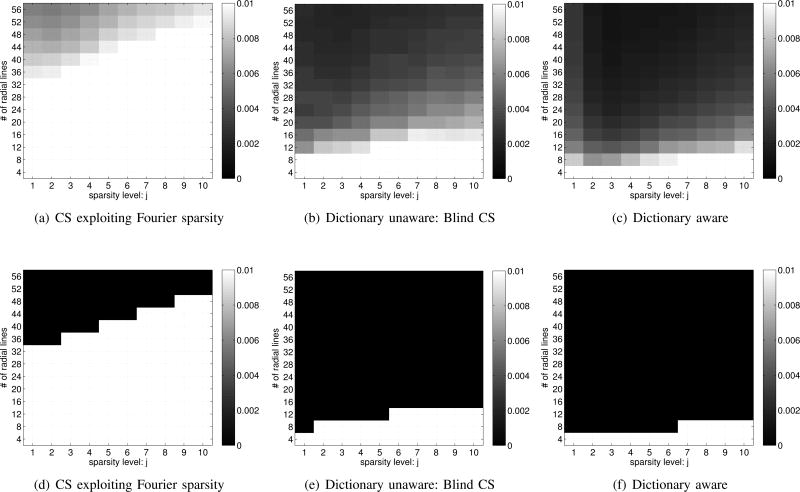Fig. 6.
Phase transition behavior of various reconstruction schemes: Top row: Normalized reconstruction error ζ is shown at different acceleration factors (or equivalently different number of radial rays in each frame) for different values of j. Bottom row: ζ thresholded at 1 percent error; black represents 100 percent recovery. We study the ability of the algorithms to reliably recover each of the data sets Γj from different number of radial samples in kspace. The Γj, shown in Fig. 5 are the j sparse approximations of a myocardial perfusion MRI dataset with motion. As expected, the number of lines required to recover the dataset increases with the sparsity. The blind CS scheme outperformed the compressed sensing scheme considerably. The learned dictionary aware scheme yielded the best recovery rates. However due to a small over head in estimating the dictionary, the dictionary unaware (blind CS) scheme was only marginally worse than the dictionary aware scheme.

